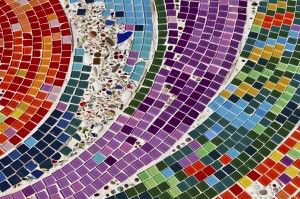The Secret History of Tile
 Tile is one of the oldest materials used in permanent architecture. Dating back to at least the third century B.C., tiles have been an enduring fixture on roofs, floors, and decorative panels for more than 2000 years. It is easy to see why they have such enduring popularity. Tiles are strong but lightweight, which means that they are easy to use a building material but still have the capability to stand up to the elements. In addition, many types of tiles are stain resistant and waterproof, which means that in addition to being practical they also retain their beauty for many years.
Tile is one of the oldest materials used in permanent architecture. Dating back to at least the third century B.C., tiles have been an enduring fixture on roofs, floors, and decorative panels for more than 2000 years. It is easy to see why they have such enduring popularity. Tiles are strong but lightweight, which means that they are easy to use a building material but still have the capability to stand up to the elements. In addition, many types of tiles are stain resistant and waterproof, which means that in addition to being practical they also retain their beauty for many years.
The Earliest Tiles
The earliest tiles were made of fired clay and used to create waterproof roofs. These tiles were fairly large and could be shaped so they fit together, making a roof that would allow rain to slant off of it. Because tiles are more difficult to make than thatched roofs, as well as being too heavy to dismantle and move easily, it was only when large cities and permanent settlements became more common that they were able to catch on as an alternative to temporary building materials.
The Development of Floor Tiles
Floor tiles have been around nearly as long as roof tiles, though they represent a big step forward in terms of using tile for decorative purposes in addition to purely practical. Often made of terracotta ceramics or colored stone, floor tiles presented an easy way to create a colorful, patterned surface.
Tiles Become Decorative
Decorative tile involves placing colored tiles directly only into walls or floors to create a pattern or picture. The practice dates back to ancient Persia, when the interiors of palaces and other important buildings were often completely covered in tile mosaic. The practice is still quite common today, with tile floors in homes and commercial buildings often laid out in a distinct pattern.
Western Tiles
Painted tiles became popular in Western Europe beginning around 1400 A.D. Rather than piecing together mosaics out of solid-colored tiles, European artisans preferred to paint directly onto the tile. These painted tiles were often displayed in churches, where they provided a more permanent and durable alternative to canvass paintings or tapestries.
The Modern Legacy
Nearly all these classical uses for tile are still alive and well today. Tile roofs are still used in mission and New Mexico architecture, while tile floors are common in kitchens and baths of all types. Decorative tile does not enjoy the widespread popularity it once did, but painted tiles and mosaic floors can still be found in both public buildings and private residence.
Contact Mission Tile West to make indoor or outdoor tiles part of your home. With so many styles available, there is sure to be something to suit any design scheme.
